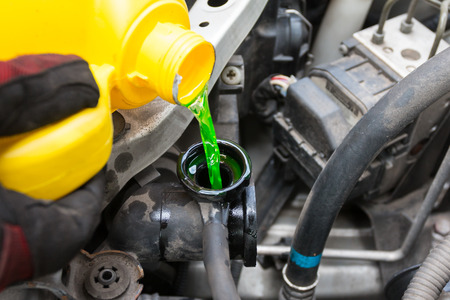
Ah, summer. It’s the perfect time of the year to enjoy quality time outdoors. Whether it be heading down to the beach, diving into a public pool, or going for a pleasant cruise into the countryside. The world is your oyster! No matter how you love to spend your summer, you need a reliable car to comfortably get from A to B.
Of course, soaring temperatures and humidity can place enormous stress on your car. These harsh conditions present a few unique problems that only occur in summer. The good news is, it’s quick and easy to perform a few maintenance checks on your own, saving you from costly repairs and inconvenience.
Here’s how to get your car into top shape for summer:
Cooling System and Coolant Levels
Your car’s cooling system is designed to keep the engine cool while the car is running. In summer, the system has to work extra hard to avoid engine damage. This added pressure increases the risk of wear and tear. To reduce the risk of overheating perform these simple maintenance checks:
* Check the coolant level in the coolant container. If the level is low, top it up with red or green coolant as advised in your vehicle owner’s manual.
* A low coolant level may indicate a leak. When the engine is cool, check both the connection points and joints of the coolant hoses to confirm the leak.
* Assess the condition of the hoses themselves. When cool, give the hoses a gentle squeeze. They should be strong and firm, not soft and squishy. Have them replaced if they are soft.
* Over time coolant starts to degrade and lose its effectiveness. Use a Coolant Test Strip to confirm if the coolant needs to be replaced. If so, flush out the existing coolant, and top up with red or green coolant as advised in your vehicle owner’s manual.
Tyre Pressure
Check the pressure of your tyres every fortnight. Doing this will ensure the car is easy to handle, quick to brake, and safe to drive in all weather conditions. You’re also more likely to detect tyre punctures early before they spoil your day.
Use a portable tyre pressure gauge to check the pressure of your tyres. Or use an air pump at your local service station to check the tyre pressure and refill as needed. For the most accurate reading, check the pressure of your tyres when they are cold. In summer, ideal times are early in the morning or late in the evening.
Read the specifications of your vehicle owner’s manual to determine the correct tyre pressure for your vehicle. As a general rule of thumb, you can add an extra 2psi on top of the manufacturer’s recommended tyre pressure, as this accounts for the increase in temperature.
To further increase the lifespan of your tyres, rotate them regularly. This means switching the front tyres to the back, and vice versa. Visit your local mechanic to save time on hassle on having this service performed.
Tyre Tread
Tyre tread helps you drive safely in wet conditions. The tread in the rubber disperses water from the road, improving grip and braking performance. When the tread goes bald it becomes harder to accelerate, steer and brake in wet weather.
How do you accurately check the depth of your tyre tread? With a 20 cent coin, of course. The recommended limit for tyre tread depth is no less than 3mm. To check the tread depth, place a 20 cent coin into the tread of the tyre. If the coin can’t reach the bottom of the surface, the tyres need to be replaced.
Car Battery
Summer can drain your car’s battery fast. When exposed to extreme heat, the internal components can corrode and reduce how much power the battery can hold. Therefore, preventative maintenance is vital.
Follow these simple tips to keep your battery fully charged throughout summer:
* Keep your battery clean. First, mix up a combination of baking soda and water. Grab an old toothbrush, dip the brush into the solution and gently scrub the battery terminals. This removes the build-up of dirt and prevents the battery from draining faster.* Try parking in the shade or a garage to prevent overheating.
* If your battery has a heat barrier to protect the battery from heat exposure, make sure the barrier is secured in place.
* Use a multimeter to measure the battery voltage. Set the multimeter to the ’20 DC volts’ setting and start the car. Touch the negative (black) battery terminal with the negative meter probe, and touch the positive (red) battery terminal with the positive meter probe. The ideal reading for a running engine is from 13.7 to 14.7. If the amount is less, replace the old battery with a new one. Check out this guide on the best car battery that will help you to choose the perfect one for your car.
Air Conditioning
Few things are worse in summer than turning on the A/C only to find it has stopped blowing cold air. To avoid being stranded in a hot car, get your air conditioned service before the weather starts to warm up.
When you take your car in for an air condition service, a mechanic will connect the car to a charging system and measure the system pressure and then diagnose the problem. Every aspect of the air conditioning system will be inspected to pinpoint the source of the problem. If a leak is found, the team will fix the exact source of the leak, flush out the current refrigerant gas, and then re-gas the system.
At the end of the day, prevention is always better than a cure. To avoid being stranded in the blistering heat, take a few moments to perform these maintenance checks when it’s convenient for you. If you have trouble with anything at all, take your vehicle to the nearest mechanic for a routine inspection and total peace of mind.




